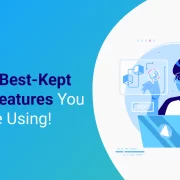
How Does a Digital Learning Ecosystem Foster Business Growth?
Research shows that employees value continuous learning more than any other form of reward or recognition. One reason is that knowledge, information, and technology are constantly in flux, requiring the current workforce to constantly be on their toes to update their skills.
Therefore, when organizations invest in learning and development ecosystem initiatives, it provides them with a sense of security that they have a platform to constantly enhance their skills with evolving trends.
Let’s learn more about the learning and development ecosystem in this guide and how it encourages business growth!
Table of Contents:
- Importance of the Learning and Development Ecosystem
- What is a Digital Ecosystem?
- What are the Inclusions of a Learning and Development Ecosystem?
- Impact of the Learning and Development Ecosystem on Organizations
- Next Steps
- How Does a Learning and Development Ecosystem Enhance Business Growth?
- In Conclusion
Importance of the Learning and Development Ecosystem
As businesses evolve and grow, they are faced with a skills crisis. A report by IBM’s Institute for Business Value shows that about 60% of executives worldwide confirm that they are struggling to keep their employees updated and relevant to the new market realities. And hiring new employees in the face of the evolving information landscape is not an ideal option.
So, how to bridge the skill gap? The way forward is to build a digital learning ecosystem.
What is a Digital Ecosystem?
Gartner Research defines a digital ecosystem or a corporate learning ecosystem as “An interdependent group of enterprises, people and things that share standardized digital platforms for a mutually beneficial purpose, such as commercial gain, innovation or common interest.
Digital ecosystems enable you to interact with customers, partners, adjacent industries ‒ and even your competition.” To define the learning ecosystem, it integrates people, departments, and even organizations, enabling enterprises to create and share new experiences.
Key Features of a Learning and Development Ecosystem
A digital learning ecosystem integrates all learning content within an enterprise with various other systems, such as the employee LMS, the CRM system, the consumer-centric website, the Intranet, and other company portals.
- The idea behind a learning ecosystem design is to dissolve silos between people, processes, and departments and provide one cohesive version of the organization.
- A digital learning ecosystem provides a connected workplace where people can connect, interact, learn, and share experiences.
- The organization benefits from increased productivity and innovation, which are necessary to achieve a competitive edge in the marketplace.
Also Read All You Wanted to Know About Digital Textbooks
What are the Inclusions of a Learning and Development Ecosystem?
A learning and development ecosystem represents a framework that integrates all types of tools, technologies, and processes with the required resources. It promotes lifelong learning, is business-centered, and provides engagement while facilitating efficiency in the entire learning process.
Inclusions in a learning and development ecosystem are:
1. Learning Management System
An LMS allows for the delivery, monitoring, and management of any training program. It acts as a central location for controlling course content, monitoring learner pace, and producing analytics reports.
2. Content Management System
A content management system allows businesses to create and manage content such as eBooks and interactive modules. This helps engage learners with modern, relevant, updated, and trending information.
3. Learning Experience Platform
Learning experience platforms are focused on a personalized and intuitive learning journey. They use AI to recommend content based on the preferences, roles, and goals of employees, thus increasing engagement and retention.
4. Communication Tools
Tools such as video, chat, or voice-based systems are integrated to enable real-time collaboration. This can also enhance peer learning and knowledge sharing. Such collaboration ensures hassle-free communication across the organization.
5. Assessment and Feedback Systems
Businesses can use assessment features like gamified tests, quizzes, or surveys to monitor performance and identify skill gaps in the learners. Continuous feedback and application of predictive analysis ensure improvement and motivation.
Impact of the Learning and Development Ecosystem on Organizations
How does a digital learning ecosystem empower a business organization/ Let’s find out:
1. Builds Employee Skill Sets
Employees today seek experiences that are authentic, personal, and engaging. In response, enterprises need to fulfill these expectations to increase productivity and attract and retain talent. A digital learning ecosystem is a means to provide personalized experiences across the employee lifecycle.
Such integration opens avenues for employees to upgrade their knowledge and skills from wherever they are located. The learning content across the enterprise can be delivered in a range of formats, including web-based learning, eLearning, classroom learning, blended learning, mobile learning, and microlearning.
2. Streamlines Content
With a digital learning ecosystem, employees’ learning is not limited to the corporate LMS; rather, it puts learning directly into their path, allowing them to choose the skills and knowledge they wish to upgrade in the format and device of their choice. A digital learning ecosystem ensures that all relevant, coherent, and updated content is woven together. Learners can pick up the threads they want to follow to weave their learning tapestry.
3. Enhances Data Analytics
Within a connected environment, they can gain a 360-degree perspective of the skills, knowledge, and expertise they need and select their personalized learning paths. L&D professionals can also use collated data to predict and design the right learning strategies for their workforce.
This shift in focus fosters active engagement and long-term retention, ensuring more productivity, faster time to market, and higher client satisfaction. Not to mention more satisfied employees and a lower attrition rate.
4. Gives Employees Access to Learning Materials and Tools
Digital learning ecosystems are evolved workplaces that give employees access to all data, tools, or communication devices they need to achieve their business goals.
These systems ensure much faster access to data and communications, allowing for friction-free workplaces. Such streamlined access to data empowers both the workforce and the enterprise to make more rapid and accurate decisions.
5. Shares Best Practices
With a digital learning ecosystem, enterprises have an infrastructure in place to capture, collate, and share their workplace best practices with all their employees. All organizations have standardized practices that they expect all their employees to follow.
This is all the more important for businesses that must maintain a brand image, implying that all their products must act, look, and perform in a defined way and always meet customer expectations for quality and experience.
6. Collaborates and Integrates
A digital learning ecosystem ensures that all workers have all the information they need to make informed decisions and access to closed workflows so that all tasks are authorized, completed, and released according to the defined procedures.
It provides a platform to connect and share relevant information from all databases within the enterprise and then configures it to enable employees to make informed decisions in compliance with regulations, quality control, and production targets.
Also Read: Best Online Learning Platforms for Employees
Next Steps
To build and benefit from a digital learning ecosystem, as an enterprise, it is important to understand the needs of your employees and then design the content with the larger picture in mind. Here are some integral next steps:
- You need to build empathy with the learners. This is possible by designing content with the end user in mind and applying the practices of transparency, personalization, and responsiveness.
- Once the content is published, it must be constantly updated at speed and scale while also being personalized for each employee.
- Also, use data-driven insights to predict your business’s critical skills and create new content for employee learning and development.
- And finally, strive for constant improvement and monitor, measure, and optimize your digital learning ecosystem.
How Does a Learning and Development Ecosystem Enhance Business Growth?
A learning and development ecosystem is more than a training tool. Here’s how a learning and development ecosystem boosts business growth:
1. Increases Employee Productivity
A well-planned ecosystem allows employees to access learning resources and learn continuously and easily. This boosts efficiency and saves time to solve the challenges at hand, thus improving productivity.
2. Enhances Innovation
Through continuous learning and upskilling, the organization builds a flexible and forward-thinking workforce. Knowledgeable employees with the latest updates provide innovative ideas and solutions, and the business remains competitive.
3. Boosts Employee Engagement
A stimulating learning and developing ecosystem brings purpose to employee lives. Customized learning tracks and engaging content keep individuals motivated, which in return leads to higher job satisfaction and retention.
4. Aligns Skills Towards Business Goals
Businesses will be able to customize and focus their ecosystem on skills aligned towards strategic objectives. This will ensure it has a workforce that is suitable for today’s and the future’s challenges, hence driving growth.
5. Scales Down Costs
One benefit that a digital learning environment does not share with conventional methods is scalability. Large numbers can be trained at one go in a digital environment. Costs reduce but the quality of learning stays constant throughout the company.
In Conclusion
A digital learning ecosystem goes beyond the learning management systems, courses, and content to help enterprises achieve their growth ambitions. At a time when the shelf life of skills and knowledge is about two years, there is a constant need to upskill employees to take on the challenges of growth and expansion and remain competitive in the market.
Conversely, research shows that the chance to learn and evolve constantly is one of the most important factors motivating employees.
With avenues for digital learning in the workplace, you can provide your employees with a platform like Hurix Digital to access all types of L&D content, data, and applications to upskill, learn, and apply their knowledge on the job. It enables greater connection between employees, allowing them to connect, interact, and work together.
Our experts will help you explore more about implementing a digital learning ecosystem!




